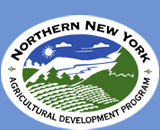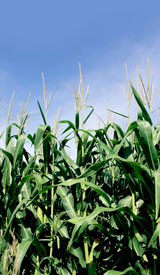

Agriculture-Based Economic Development
Successful Strategies for Smaller Dairy Farms
With a grant from the Northern New York Agricultural Development Program in 2004, Steve Richards, Program Director of NY FarmNet and NY FarmLink, developed a new publication called �Profiles of Successful Strategies for Small Dairy Farms.�
Working with Steve�s leadership, Cornell Cooperative Extension educators in Northern New York interviewed 12 small farm dairy owners about the strategies and adaptations they have used to stay competitive in the dairy industry as small farms.
According to the 2002 Census of Agriculture:
� about 65% of the dairy farms in Clinton County have fewer than 100 cows
� about 80% of the dairy farms in Essex County have fewer than 100 cows
� about 83% of the dairy farms in Franklin County have fewer than 100 cows
� about 75% of the dairy farms in Jefferson County have fewer than 100 cows
� about 82% of the dairy farms in Lewis County have fewer than 100 cows
� about 80% of the dairy farms in St. Lawrence County have fewer than 100 cows.
According to the 2002 Census of Agriculture and the New York Agricultural Statistics Service, 78% of the Northern New York region�s 4,572 farms have less than 100 dairy cows providing about 33% of the milk produced in the region. Statistics show that about 92% of the region�s farms have less than 200 cows and those farms produce about 63% of the region�s milk supply.
Richards says, �These profiles will be most useful for farm owners who are considering making changes to their operations to increase profitability and to meet personal and family goals. These profiles will provide them with ideas, information and inspiration from their fellow farmers working in Northern New York.�
The small farm dairy owners participating in this Northern New York Agricultural Development Program project say they measure the success in both financial terms and by their ability to balance business growth with personal and family goals. This �balancing act� and an ability to adapt as goals and conditions change are core concepts for operating a successful family-run small dairy business.
�Transition Tips� at the end of each profile offer strategies that can be applied to any operation. The strategies used by the participating Northern New York farmers include transitioning to seasonal dairying, business partnering, sharing resources: equipment and manpower, making a niche product such as farmstead cheese, selling development rights and using computerized production and record-keeping technology.
"Small farms are a vital part of New York's dairy sector," says Joanna Green, Extension Associate with Cornell's Small Farms Program. "In addition to contributing to Northern New York's economic well-being, small farms support the social infrastructures in their communities, contribute attractive working landscapes and help protect the region's rich environmental resources. We hope these profiles are helpful to other farmers looking to make adjustments to ensure the successful future of their small dairy businesses.�
An indication of the type of strategy used by each farm is indicated below. Please click on the links to learn more.
Essex County Profiles:
Conservation Easement to the Rescue: Dairyman Finances Start-Up Farm by Selling Developing Rights
Franklin County Profiles:
Ooms Dairy: Made the Move to Farming on Their Own
Recore Diary: Making Farming More Manageable
Jefferson County Profiles:
Homestead Fields: Dairy Changes Ownership and Style
Reed Haven: Sound, Slow Growth Positions Dairy for Future
Lewis County Profiles:
Herrdale: Dairy and Beef: A Perfect Fit
Sullivans: Milking 46 of 52 Weeks at Seasonal, Grazing Dairy
St. Lawrence County Profiles:
Ortmans: Weathering a Dairy Start-Up
Thompson: Farming to Fit Assets and Interests
Back To Current Projects Listing
